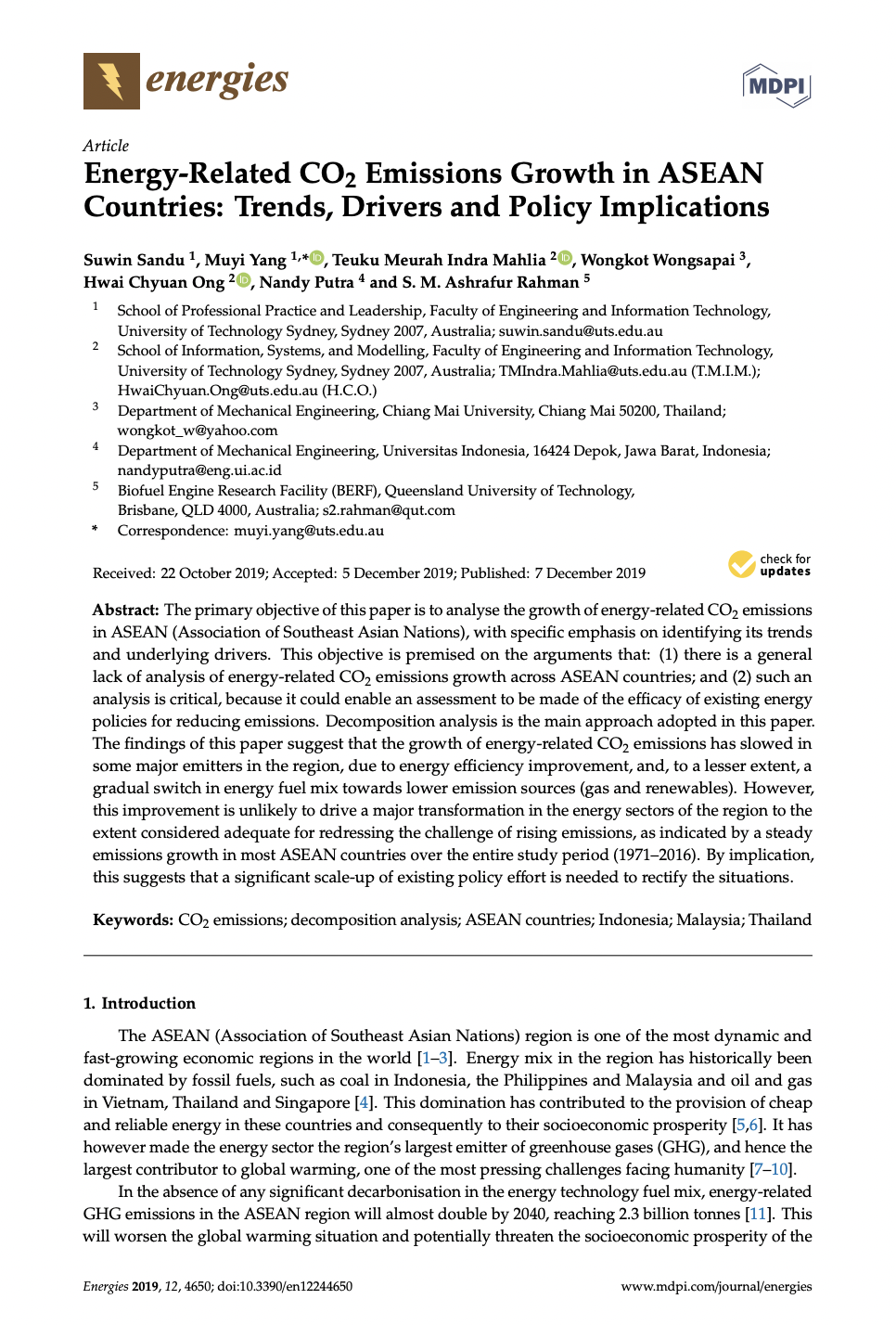
Keyword(s)
Author(s)
Suwin Sandu (a), Muyi Yang (a), Teuku Meurah Indra Mahlia (b), Wongkot Wongsapai (c), Hwai Chyuan Ong (b), Nandy Putra (d), S. M. Ashrafur Rahman (e)
Publisher
Published Date
Access
DOI
(a) School of Professional Practice and Leadership, Faculty of Engineering and Information Technology, University of Technology Sydney, Sydney 2007, Australia
(b) School of Information, Systems, and Modelling, Faculty of Engineering and Information Technology, University of Technology Sydney, Sydney 2007, Australia
(c) Department of Mechanical Engineering, Chiang Mai University, Chiang Mai 50200, Thailand
(d) Department of Mechanical Engineering, Universitas Indonesia, 16424 Depok, Jawa Barat, Indonesia
(e) Biofuel Engine Research Facility (BERF), Queensland University of Technology, Brisbane, QLD 4000, Australia
The primary objective of this paper is to analyse the growth of energy-related CO2 emissions in ASEAN (Association of Southeast Asian Nations), with specific emphasis on identifying its trends and underlying drivers. This objective is premised on the arguments that: (1) there is a general lack of analysis of energy-related CO2 emissions growth across ASEAN countries; and (2) such an analysis is critical, because it could enable an assessment to be made of the efficacy of existing energy policies for reducing emissions. Decomposition analysis is the main approach adopted in this paper. The findings of this paper suggest that the growth of energy-related CO2 emissions has slowed in some major emitters in the region, due to energy efficiency improvement, and, to a lesser extent, a gradual switch in energy fuel mix towards lower emission sources (gas and renewables). However, this improvement is unlikely to drive a major transformation in the energy sectors of the region to the extent considered adequate for redressing the challenge of rising emissions, as indicated by a steady emissions growth in most ASEAN countries over the entire study period (1971–2016). By implication, this suggests that a significant scale-up of existing policy effort is needed to rectify the situations.
Cite:
Sandu, S.; Yang, M.; Mahlia, T.M.I.; Wongsapai, W.; Ong, H.C.; Putra, N.; Rahman, S.M.A. Energy-Related CO2 Emissions Growth in ASEAN Countries: Trends, Drivers and Policy Implications. Energies 2019, 12, 4650. https://doi.org/10.3390/en12244650